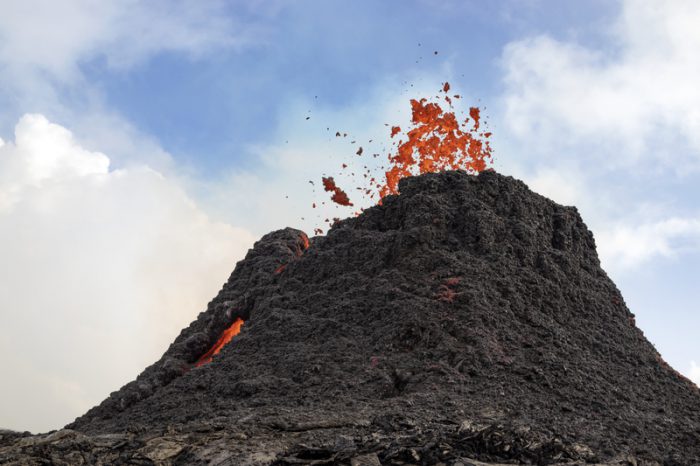On March 19, Iceland’s Fagradalsfjall volcano (which translates to “the beautiful valley mountain”) started to erupt after an 800-year snooze, putting on a dazzling lava show for the locals.
Thousands of onlookers quickly flocked to the volcano to marvel at the display of bubbling rock, bringing with them any equipment they could to capture the spectacle. One resident even brought their drone, which caught some incredible footage! Check out these POV shots as the drone maneuvers its way over the lava, even flying through the erupting crater!
Long-expected eruption
Hot lava, coming through! (Getty Embed)
Iceland has been bracing for an eruption after the country recorded almost 50,000 earthquakes in only three weeks! Iceland is prone to a lot of volcanic activity, as the island nation sits on the middle of two tectonic plates which are slowly drifting in opposite directions. As the plates pull away from each other, magma from the earth’s mantle rises to fill the space between them in the form of volcanic eruptions.
Too close for comfort?
This looks a bit too close for comfort, even for a basaltic volcano! (Getty Embed)
The amazing photos and videos beg the question, is it safe to be that close to an active volcano? Well, not really. The lava spewing out from the eruption is about 1000 to 1200°C (1832 to 2192°F)—that is seriously hot, and something you definitely want to stay away from.
But Fagradalsfjall is what we call a “basaltic” volcano, meaning the lava is very fluid and flows similarly to warm honey. This allows for any trapped gas in the rock to slowly bubble out before it can build up and explode. Basaltic eruptions tend to flow out calmly and predictably, which means no 'surprise' booms. Many scientists are closely monitoring the eruption and agree that it currently poses no danger to the public or the surrounding towns, as long as they stay clear from the molten rock.
Best case scenario
What a relaxing sight. (It's actually true!) (Getty Embed)
Even for a country that’s prone to eruptions, Fagradalsfjall’s gentle awakening comes as a relief to many Icelanders who remember the 2010 eruption of Eyjafjallajökull, which sent so much volcanic ash into the sky that it disrupted European air traffic for weeks. While both attracted worldwide attention, this current eruption is gaining viral fame as more breathtaking images of the glowing red crater get shared. Media outlets have even placed webcams at the base of the volcano, streaming a live 24hr stream to thousands of online viewers.
Scientists believe that the eruption will go on for several more weeks or even months. We’ll continue to check in on this glowing cauldron of rock and marvel at one of nature’s most stunning displays.
 The recent eruption of this volcano in Iceland has caused quite a stir! (Photo
The recent eruption of this volcano in Iceland has caused quite a stir! (Photo 








